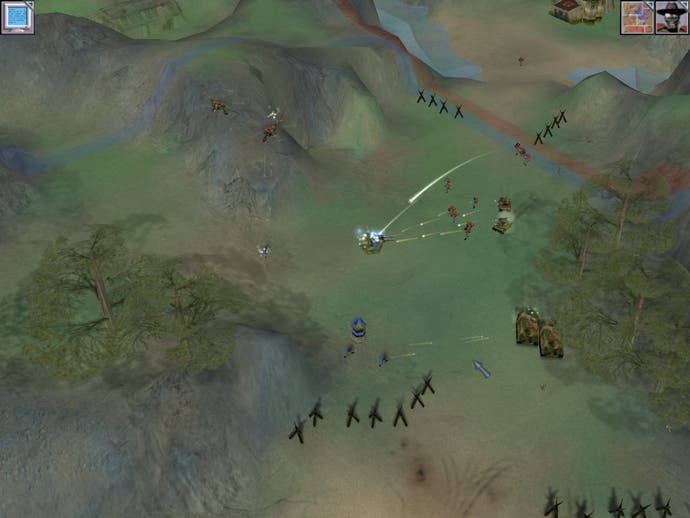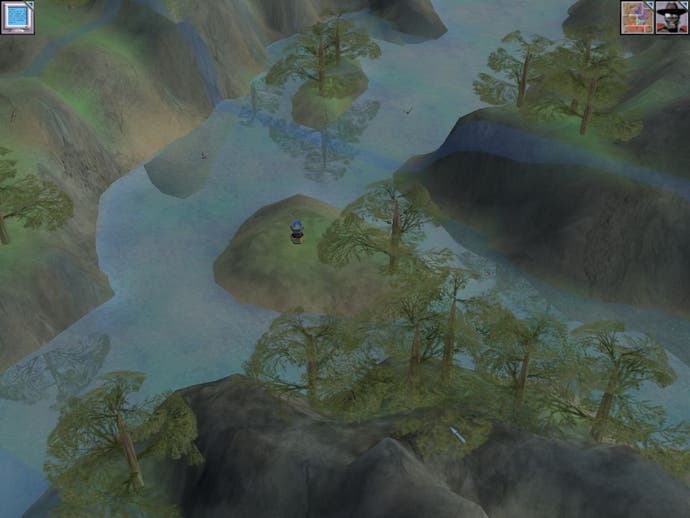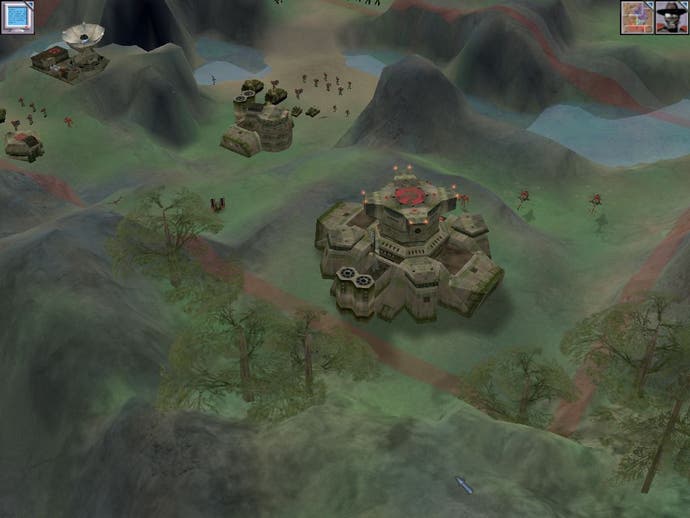Z : Steel Soldiers
Review - should Z have been left to rust in peace, or will the sequel bring something new to the real-time strategy genre?
Those of our readers with a long memory and a few grey hairs may remember the original Z, which was released way back in 1996. Although it was a real-time strategy game, Z replaced the now traditional harvesting and mining of games like Warcraft and Command & Conquer with a resource system based on occupying territory.

Back Once Again
The newly released sequel Z : Steel Soldiers is much the same, with each map split into several territories and players battling to reach the flags which control them. The more territories you control the more rapidly you will gain credits to spend on new units and buildings, and every battle therefore tends to begin with a mad dash to touch as many flags as possible, shortly followed by a chaotic mid-field scrum as the two sides clash and try to hang on to the territory that they have already grabbed.
Once things have quietened down a bit you might find time to build up your base, change your army from a disorganised rabble into a well-honed fighting machine, and start indulging in some actual tactics instead of just throwing troops into the grinder. Z is not going to appeal to the more sedate and thoughtful strategy gamers out there - if you sit back and expand slowly the enemy will be swarming into your base with hordes of robots and tanks before you know what hit you. The only way to win the game is to hit hard and hit fast, then desperately try to regain control of the situation once the initial tank rush is over.

Charge!
At the heart of Z is a single player campaign featuring a linear progression of thirty missions, linked by comic book style cutscenes which look good but are mostly deeply unamusing. Someone must have surgically removed the Bitmap Brothers' sense of humour since 1996, because the jokes in the game usually fall fairly flat.
Mission objectives vary from rescuing prisoners of war and escorting your commander through enemy territory to ambushing convoys and capturing enemy buildings. This keeps the story moving along nicely, with your commander Zod managing to break a cease-fire between TransGlobal Industries and the MegaCom Corporation, just when it looked like five centuries of war was about to end. The good news is that he may have uncovered a conspiracy in the process. As with most real-time strategy games though this is all fairly irrelevant once the shooting starts. Because of the way the resource system works you will have to grab as much land as you can just to stop the enemy from building up too much of an advantage, whatever it is that you are supposed to be doing. The AI is bloodthirsty if a little uncoordinated, and if you let it get the upper hand it will keep throwing troops at you until it breaks through.
Your own units on the other hand are apparently a bunch of pacifists. Even on the "aggressive" behaviour setting they will often ignore enemies, even when the tank next to them is getting pelted with rockets. This forces you to keep an eye on all of your troops to make sure that none of them are being picked off by enemy artillery or helicopters, which makes things even more chaotic. There are also some irritating features, like the unstoppable air raids which infect your buildings with a virus that causes guns to fire randomly (often blowing each other up in the process) and cancels factory build queues, forcing you to waste time setting everything up again once the virus wears off. The game is already pretty frantic at times, and the last thing you need is to be forced to babysit your units and mess around giving the same orders over and over again.

Bug Hunt
Unfortunately this isn't helped by the game's interface, which is primitive at the best of times. Thankfully a few more hot keys have been added in the latest patch, but even with the new found ability to remove units from a group (ooh!) and select every unit of the highlighted kind currently on the screen (ooooh!), it is still clumsy and requires far more effort than should really be necessary in a fast-paced strategy game.
Z seems to be lacking polish, and it was rather worrying when we opened our boxed copy to discover a little leaflet warning that there was a problem with starting the game up under Windows 2000, and suggesting you download a patch from the official website. Even more worrying was that at the time of writing the latest patch wasn't available there - you have to go and download it from FilePlanet instead - and that even after patching the game still sometimes crashes without warning.
In fact, the supposed Windows 2000 problem also effects other operating systems, and it's hard to see how the beta testers could have missed it. When you start the game the anti-piracy CD check system doesn't shut down properly and leaves the game itself in a background window. Unless you click on the greyed out pane to bring it back to the front, the game just sits there without ever loading. Whoops. The new patch more or less fixes this rather obvious flaw, as well as solving an issue with the pathfinding code freezing the game up for a second or two when you give your troops a complex movement order, and curing various other annoying little bugs and gameplay issues which afflicted the out-of-the-box version of the game.

Land Ahoy!
One area where Z has been suitably polished though is the graphics, which are nicely detailed from the rolling terrain to the chunky tanks and helicopters and the satisfying explosions they produce when they get blown up. Artillery shells arc gracefully through the sky while bullets rip past you and smoke and flames rise from damaged vehicles and buildings.
The game's thirty missions are spread across six worlds, including the seemingly inevitable ice, desert and lava worlds as well as lush forests dotted with Mayan ruins. The terrain isn't just there to look pretty though - taking the high ground will give you a tactical advantage over your enemy, although you have to balance that against the need to carry on expanding to capture more territory and so earn more resources.
Most maps also include one or more bridges which can be repeatedly blown up and repaired, and these often act as chokepoints between opposite sides of a river, allowing you to hold off tanks and infantry by destroying or defending them. Amphibious APCs can be used to carry robots across rivers or lakes, but there are usually only certain areas where you can drive in and out of the water. There is plenty of room for tactics here, but due to the fast pace of combat and the clumsy interface you will have to be quick and patient to achieve anything much more sophisticated than a tank rush, especially during the anarchic opening stages of the game.
Conclusion
Steel Soldiers does a reasonable job of bringing the novel gameplay of Z to a modern audience, but it's far from perfect and could probably have used a few more weeks of fine tuning. Even after installing the patch it's still a bit awkward to control, and lacks many of the interface niceties we have come to expect as standard in our strategy games since 1996. On the bright side the lengthy single player campaign should keep you busy for quite a while, and there are also a few maps available for multiplayer and AI skirmish games, which can be fairly entertaining as well.
If you like your real-time strategy fast and furious and don't mind a few rough edges, this could be just what you were looking for.

